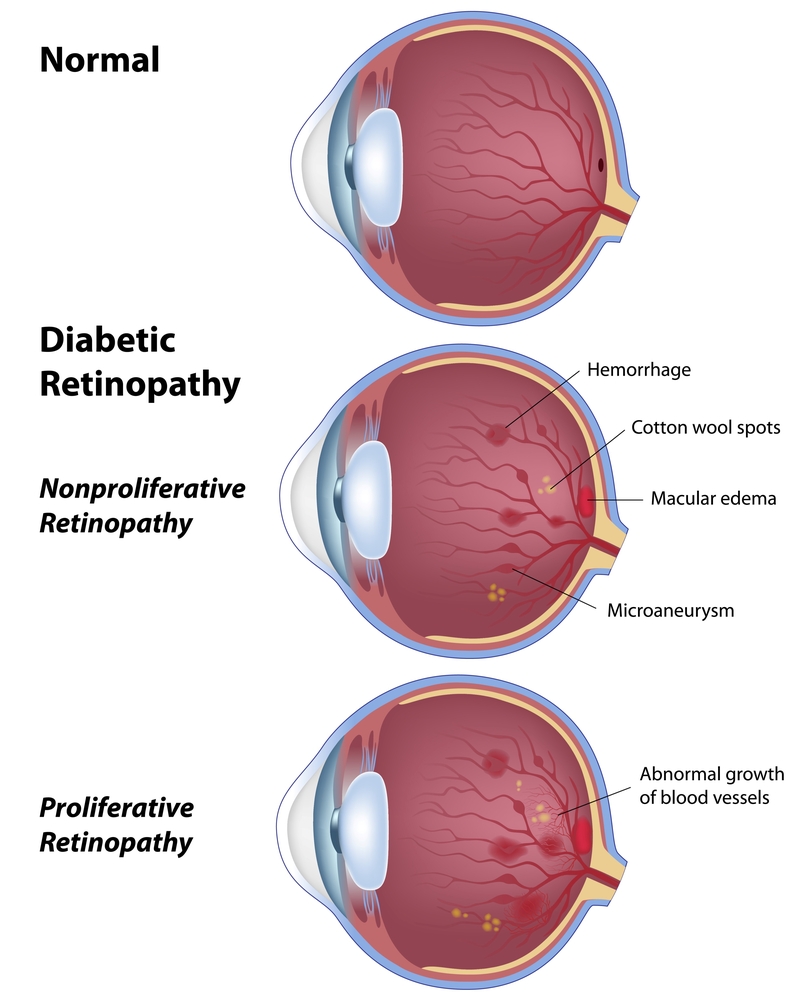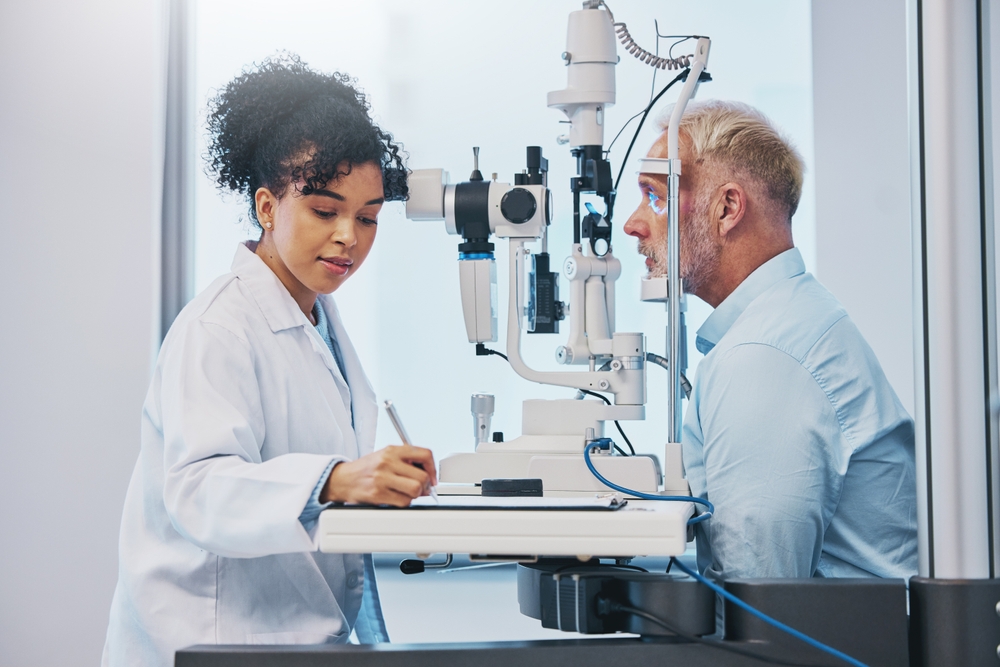Eye disease is more common in people who have diabetes. Having diabetes increases your risk of developing cataracts and glaucoma.
However, diabetic retinopathy is an eye condition directly caused by diabetes. If you have diabetic retinopathy, you’re at risk for significant vision loss.
Left untreated, it can lead to complete blindness. You can manage diabetic retinopathy to preserve your vision for many years.
However, it has no cure, so treatment is about slowing and preventing further vision loss. Any vision lost to the eye condition is permanent and irreversible, meaning it cannot be regained.
It’s essential to see your eye doctor frequently if you have diabetic retinopathy. It’s also imperative to have eye exams on a regular schedule if you have diabetes, even if you haven’t been diagnosed with diabetic retinopathy. Keep reading to learn how often you should schedule eye exams if you have diabetic retinopathy!
Diabetes and Eye Health
Diabetes affects the body’s ability to make or utilize insulin. Insulin moves blood sugar, called glucose, from the blood to the cells to give them energy to function.
When you don’t have enough insulin or the insulin isn’t used correctly, that energy stays in your blood and heightens your glucose levels. High blood sugar can affect your health in many ways.

The way diabetes affects your eyes usually has to do with blood vessels. High blood sugar affects blood vessels, particularly in the eye, because the vessels are so small. This can put you at higher risk for eye disease and can lead to diabetic retinopathy.
What is Diabetic Retinopathy?
Diabetic retinopathy occurs when high blood sugar levels cause blood vessels in the retina to grow abnormally, swell, and leak. The leaking blood vessels damage the retina, which then damages your vision.
Your retina allows light to pass through your eye and become signals sent to your brain. It contains special cells called photoreceptors.
When your retina becomes damaged, these cells die and do not regenerate. With enough damage, your retina cannot translate light into signals sent to the brain, causing vision loss.
Again, the damage done by diabetic retinopathy is irreversible. The first symptoms you’ll notice are blurred vision, dark areas of vision, and vision loss.
When these symptoms appear, significant damage has already been done to the retina, and they are irreversible. Ideally, you want to diagnose diabetic retinopathy as early as possible before developing symptoms. The only way to do this is by having eye exams on a regular schedule.
How Often Should You Have Eye Exams?

If you have diabetes, you should have your eyes examined more often than the average person. Eye exams are the only way to diagnose diabetic retinopathy early.
The condition can only be detected by closely examining the retina through dilated pupils or using specialized imaging equipment.
How often you need an eye exam depends on your risk level, which varies depending on your type of diabetes. If you have Type 1 diabetes, you should have an eye exam within five years of your diagnosis.
However, if you have any other eye health issues, including a refractive error, you should see your eye doctor yearly, even if you have Type 1 diabetes.
If you have Type 2 diabetes, you should have an eye exam right after diagnosis and likely at least once every year after that. If you’re pregnant and have any kind of diabetes or gestational diabetes, you should have an eye exam within the first three months of pregnancy and then at least one more at one year postpartum.
Who is at a Higher Risk for Developing Diabetic Retinopathy?
Of course, you may need to see your eye doctor more frequently if you’re at higher risk for diabetic retinopathy. You may be at higher risk of developing diabetic retinopathy if you:

- Have a family history of diabetic retinopathy
- Have high blood pressure
- Have high cholesterol
- Have poorly managed diabetes
- Have had diabetes for a long time, even if your blood sugar is well-managed
Talk to your eye doctor about your risk level so they can tell you how often you need eye exams and establish the proper eye exam schedule.
If you are diagnosed with diabetic retinopathy, how often you need an eye exam afterward is entirely dependent on some factors. These include how severe your particular case is and what treatment plan your eye doctor comes up with.
Regular treatments are often needed to manage the eye condition, so you may need to see your eye doctor several times a year to treat and assess the eye condition’s progression.
Treatment for Diabetic Retinopathy
Treatment for diabetic retinopathy cannot cure the eye condition or reverse vision loss. Still, it can significantly slow damage to the retina to preserve your vision for a long time. There are two main treatments.
Anti-VEGF Injections
Vascular Endothelial Growth Factor, or VEGF, is a signal protein that stimulates new blood vessel growth. Anti-VEGF injections inhibit the protein and blood vessel growth, preventing the formation of abnormal blood vessels to minimize the subsequent swelling and leaking that damages the retina.
These injections are given directly into the eye and must be given regularly to prevent retinal damage.
Laser Therapy
Laser therapy uses a laser to disintegrate blood vessels on the retina. The medication is then injected into the patient’s bloodstream.
The medication is then present in the retina’s blood vessels, and the laser activates them to destroy those blood vessels, preventing further swelling and leaking.
Diabetic retinopathy treatment is needed regularly, and you’ll need to return to receive it. Your treatment schedule will determine how often you need your eyes examined to ensure the treatment appropriately manages your condition.
Do you need treatment for diabetic retinopathy? Learn more by scheduling an appointment at Omaha Eye in Omaha, NE, today!





